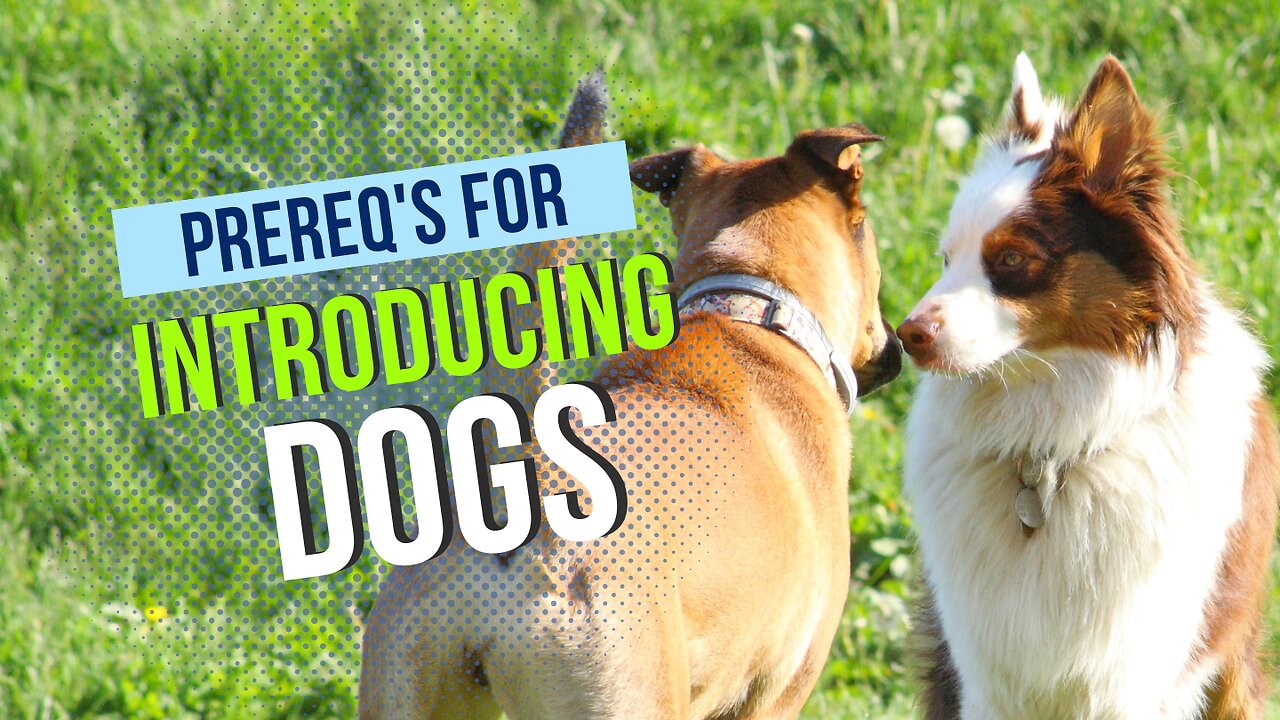Premium Only Content

Introducing new dogs.
While there are a variety of ways to introduce dogs who don’t know each other, there are a few specific items to consider throughout the process. The dogs must know that the humans are in control, the dogs should be calm, and the dogs should be practicing some kind of structure that the humans put into place.
Walking together is a great place to start but our favorite is the dogs learning to simply exist around each other without interacting. So the first thing we do to introduce is to not introduce. At least, not in the way that is commonly practiced - through interaction. We want calmness, not excitement, so we skip the interaction in the beginning.
We actually don’t have the dogs interact with each other. We want to put the odds in favor of success as much as possible. That way, we are preventing, as much as possible, the whole thing going sideways. We want little to no escalation and definitely no fighting. Calmness will better ensure the likelihood of things going well, so calmness must come first.
When humans are consistently in control, and the dogs know it, the dogs are commonly calmer and more able to regulate themselves. Think about two very excited dogs coming together during a first-time introduction, there is a much higher chance of a fight or flight response, or, it could simply be playtime - we aren’t really sure which one until we do it. But instead of gambling, we like to hold off on doing that until we get calmness and all the dogs listening to the humans.
When structuring the situation where the dogs are accountable to a stationary command for duration, we get calmness. If the dogs are having a hard time with that, then we work on it until we get it. This means long duration simply existing around each other. The dogs learn who to take direction from and that they are not free to escalate excitement on their own terms. Since dogs don’t really have the ability to limit their own excitement, it’s up to the humans to ensure it.
From there, we would have the dogs exist around each other at varying proximity. But once we have that consistently, when they do come together, it is easier to gauge how the interaction will go and the humans have a bigger window of time to assess and make the necessary adjustments because things are happening at a slower place.
These things do not “guarantee” that the dogs will get along. What we are doing is increasing the odds as much as possible in favor of success. The most important items here are the dogs having accountability, the dogs knowing the humans are in control AND listening to the humans throughout the process, and ensuring calmness.
-
 8:42
8:42
Chris Williamson
1 year agoThe Harsh Reality Of Our Collapsing Birthrate - Jordan Peterson
2.6K7 -
 LIVE
LIVE
Alex Zedra
4 hours agoLIVE! Playing Split Ficition!
2,149 watching -
 2:51:38
2:51:38
TimcastIRL
5 hours agoGovernment SHUTDOWN IMMINENT, Democrats Vow To BLOCK Trump CR w/The Native Patriot | Timcast IRL
153K86 -
 3:38:57
3:38:57
Digital Social Hour
1 day ago $8.01 earnedAndrew Tate EXPOSES the Truth About Legal Battles, Politics & Masculinity | Andrew Tate DSH #1231
31K11 -
 2:26:29
2:26:29
Laura Loomer
5 hours agoEP108: Dems Embrace Domestic Terrorism To "Get Trump"
44.9K12 -
 3:01:51
3:01:51
Right Side Broadcasting Network
8 hours agoWATCH: NASA’s SpaceX Crew-10 Launch
90.6K38 -
 2:06:17
2:06:17
Glenn Greenwald
7 hours agoJudge Orders Hearing on Columbia Student Deportation Case; Is the Ukraine Ceasefire Plan Serious? Trump Attacks Thomas Massie for His Budget Vote | SYSTEM UPDATE #422
108K140 -
 47:16
47:16
BonginoReport
9 hours agoTrump-Elon Bromance Triggers The Libs (Ep.03) - 03/12/2025
143K264 -
 4:03:41
4:03:41
Barry Cunningham
10 hours agoTRUMP DAILY BRIEFING: PRESIDENT TRUMP PRESS CONFERENCE | DEMOCRATS IN PANIC!
95.9K95 -
 1:56:30
1:56:30
Melonie Mac
8 hours agoGo Boom Live Ep 40!
52.5K5